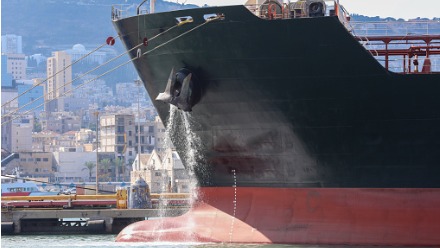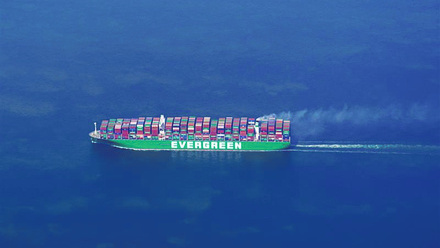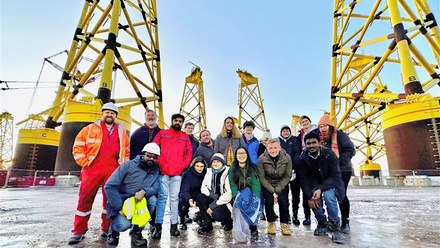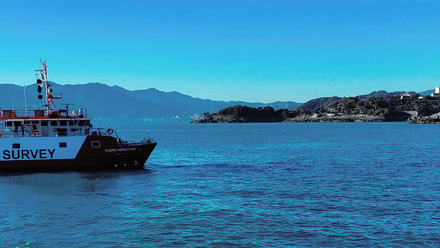Rig to reef policies: from zero to fish hero?
The decommissioning of offshore structures remains a huge talking point, with diverse marine habitats seemingly at the centre.
If you are of a certain age, then the Brent Spar PR debacle will be seared into your consciousness.
Almost 30 years ago, environmentalists from Greenpeace occupied the Brent Spar floating oil storage facility which, having become redundant to the operation of Shell’s giant oilfield 220km east of the Shetland Islands, was destined to be sunk in the deep waters of the North Sea.
There was a public outcry at Shell’s plans, with Greenpeace scientists noting the structure not only contained crude oil but also polychlorinated biphenyls (PCBs), heavy metals, and radioactive waste (although the amounts and implications for the environment were disputed by scientists on both sides of the argument, with Greenpeace eventually accepting its assessments on oil storage were overestimated).
‘The sea is not a dustbin’ claimed campaigners, igniting a wave of protest that contributed to the 1998 Convention for the Protection of the Marine Environment of the North-East Atlantic (OSPAR Convention) ban on dumping oil installations into the North Sea.
The decommissioning of uneconomic offshore structures is a global business. In the UK alone, the decommissioning of obsolete installations in the North Sea is thought to be a sector worth more than £20 billion over the next decade, according to calculations by trade body Offshore Energies UK (OEUK).
OEUK state there are currently 284 active oil and gas fields in the North Sea and by 2030 around 180 of those will have ceased production due to natural decline.
It’s the same in other mature producing basins around the world. In the US, for example, the US Bureau of Safety and Environmental Enforcement (BSEE) says there are: “Approximately 1,885 active production platforms exist[ing] on the Outer Continental Shelf (OCS) with more than 60% of these facilities more than 25 years old.”
Globally, the offshore decommissioning spend is put at $100 billion for 2021-2030, according to IHS Markit forecasts, with Europe accounting for a third of this tally.
Yet while in the North Sea, installations are being removed, it is not the case elsewhere with countries such as the US and Thailand increasingly looking at ‘rig to reef’ solutions for end-of-life asset planning. This is because it seems oil and gas structures create rich marine habitats that are invaluable for fisheries and ocean biodiversity.
A thriving underwater environment
“We look for the most appropriate solutions from a regulatory, environmental and social perspective, as well as cost-efficiency and safety. That can be rigs to reefs,” says Nick Welch of Houston-based Promethean Energy, which focuses solely on stewarding mature oil and gas assets through to end-of-life and responsible decommissioning, rather than drilling for new resources.
“There can be generational benefits from reefing, and any assessment of best solutions should not just include the current physical work effort.”
As of end December 2021, 573 platforms previously installed on the OCS have been reefed in the Gulf of Mexico, with numbers from the BSEE suggesting a typical eight-leg structure provides a home for 12,000 to 14,000 fishes and a typical four-leg structure offering two to three acres of habitat for hundreds of marine species.
“Structures have already established new ecosystems, so removing them has an impact without factoring the longer-term benefits,” says Welch. “This is not primarily about costs since much of the work is required whether or not the structure is ultimately removed.”
One 2014 study found that oil and gas platforms off the coast of California have the highest secondary production per unit area of seafloor of any studied marine ecosystem.
Indeed, the researchers discovered the amount of marine life around the structures was more than 27 times higher than the natural rocky reefs located at a similar depth in the region. This is because the platforms have a high ratio of structural surface area to seafloor surface area, creating a welcoming habitat for juvenile and adult demersal fish over a relatively small footprint of seafloor.
The researchers said this data should feed into the decision making about the fate of thousands of platforms that are set to be decommissioned in the coming years as well as informing the design, construction and deployment of offshore renewable energy structures in the future in order to maximize the potential conservation and fishery benefit from their deployment.
A case of greenwashing in public?
Advocates for the policy, such as marine environmental consulting firm Blue Latitudes, founded in 2015 by marine environmental scientists Emily Hazelwood and Amber Sparks, say not only does the policy support a richer marine life but also reduces the greenhouse gas emissions that are involved when decommissioning via complete removal of a platform.
Inevitably, however, there’s opposition, with environmentalists and marine scientists citing a range of concerns from the introduction of invasive species when structures are towed to new areas as well as the creation of underwater hazards for shipping.
In addition, Doug Parr, Chief Scientist at Greenpeace UK, said the rigs to reefs argument is, “A convenient way for oil companies to avoid cleaning up their mess while feigning an environmental conscience.”
“Where they are appropriate, artificial reefs should be clean installations which will neither corrode nor pollute the water with toxic chemicals,” claims Parr. “And they should be placed where there is a proven benefit to wildlife, not just where an oil company plonked down a now-rusty metal rig 35 years ago.”
For both existing assets from the oil and gas era, or more recent infrastructure installed for the offshore renewables industry, decommissioning will remain big business for decades to come.
Whether this results in more rigs and other infrastructure playing host to fisheries, or more onshore decommissioning, will be a debate that continues during this process.
Main image: Fish swirl around oil rig underwater; credit: Shutterstock





